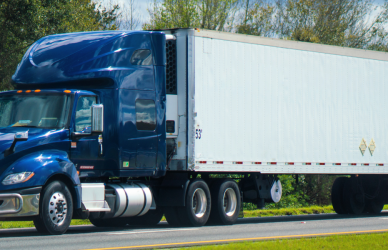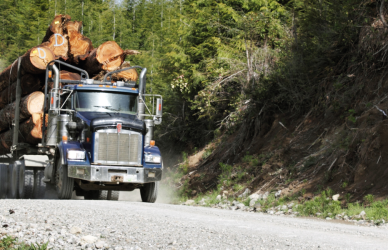Truck driving is a demanding profession that requires traveling through various roads and highways across the country. While many routes offer smooth sailing and even beautiful landscapes, others present significant challenges and hazards for truck drivers. Here are the top six worst and most difficult routes for truck drivers to drive, including the reasons behind their difficulty as well as some precautions drivers can take if they find themselves driving these routes.
- Dalton Highway (Alaska Route 11): Dalton Highway, also known as Alaska Route 11, is a remote and rugged road that stretches over 400 miles from Fairbanks to Deadhorse on Alaska’s North Slope. While many truck drivers will never have to drive this route, it presents unique challenges for those who do. The unpaved gravel road goes through vast wilderness, tundra, and permafrost regions, presenting numerous hazards for truck drivers. Challenges include narrow lanes, rough terrain, extreme weather conditions, and limited maintenance and emergency services along the route. The Dalton Highway is notorious for its icy conditions, low visibility, and encounters with wildlife, making it one of the most dangerous routes for truck drivers in the United States.
- Route 17 (The “Navy SEALs” Highway) in Arizona: Route 17, also known as the “Navy SEALs” Highway, is a remote and desolate stretch of road in Arizona that connects Phoenix to Flagstaff. This two-lane highway winds through rugged desert terrain, featuring steep grades, tight curves, and limited visibility. Truck drivers navigating Route 17 must deal with extreme temperatures, intense sun exposure, and the risk of encountering wildlife on the road. The lack of services and cell phone reception along this isolated route adds to the challenges, making it one of the most unforgiving roads for truck drivers in the southwestern United States.
- Highway 1 along the California Coast: Highway 1, also known as the Pacific Coast Highway, is a scenic route that runs along the coastline of California. While it offers breathtaking views of the Pacific Ocean and stunning landscapes, certain sections of Highway 1 pose significant challenges for truck drivers. The narrow and winding roads, coupled with steep cliffs and hairpin turns, require extreme caution and precision when navigating large commercial vehicles. Furthermore, the frequent presence of cyclists, pedestrians, and recreational vehicles adds to the complexity of driving on Highway 1. Truck drivers must exercise patience and vigilance to safely navigate this challenging coastal route.
- Interstate 70 through the Rocky Mountains: Interstate 70 (I-70) stretches from Utah to Maryland, passing through the rugged and mountainous terrain of the Rocky Mountains in Colorado. This specific stretch of the road presents numerous challenges for truck drivers, including steep grades, sharp curves, and unpredictable weather conditions. During winter months, I-70 is notorious for heavy snowfall and icy conditions, leading to hazardous driving conditions and typically several road closures. Truck drivers navigating this route must exercise extreme caution and be prepared for sudden changes in weather and road conditions.
- Interstate 80 through Wyoming: Interstate 80 (I-80) spans across the United States, connecting California to New Jersey. However, the section of I-80 that passes through Wyoming presents significant challenges for truck drivers. Known for its harsh winter weather and strong crosswinds, this stretch of I-80 experiences frequent snowstorms, blizzards, and icy conditions during the winter months. The combination of steep grades, narrow lanes, and low visibility due to blowing snow makes driving on I-80 in Wyoming extremely hazardous for truck drivers. Additionally, the lack of available services and long stretches of isolated roads increases the risks, earning it a spot among the worst routes for truck drivers.
- Interstate 5 in California’s Grapevine: Interstate 5 (I-5) crosses the state of California, passing through the Tejon Pass, also known as the Grapevine, a stretch of road north of Los Angeles. This mountainous section of I-5 features steep inclines and declines, narrow lanes, and frequent congestion, particularly during peak travel times for the busy city of Los Angeles. The Grapevine is prone to high winds, dense fog, and occasional snowfall during winter months, making it one of the most challenging routes for truck drivers in California. Drivers must remain vigilant and closely follow reduced speed limits and warning signs to safely navigate this portion of the Interstate.
Truck drivers face numerous challenges and hazards when navigating the country’s highways. To safely navigate these difficult roads, truck drivers must exercise caution, adhere to safety protocols, and be prepared for unexpected challenges along the way. Truck drivers can navigate even the most difficult routes by staying vigilant and following best practices with confidence and professionalism.











